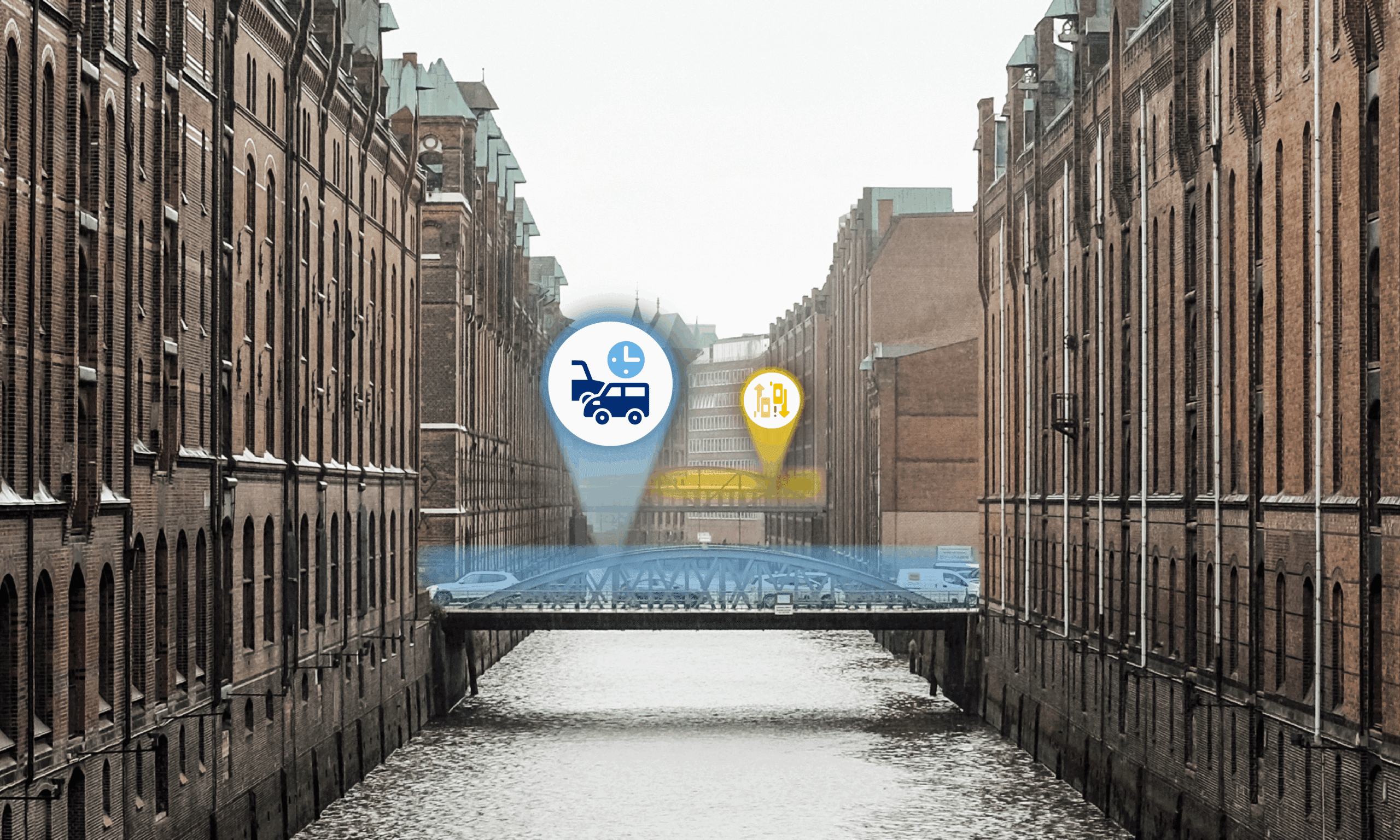
As European cities face increasing pressures from urbanization and aging infrastructure, Hamburg is taking a bold, practical approach.
At the heart of this transformation is DigiLab. DigiLab is a department in the LSBG (Landesbetrieb Straßen, Brücken und Gewässer/Agency of Roads, Bridges and Waters) dedicated to using digital innovation to improve infrastructure efficiency, safety, and mobility. Created in 2019, DigiLab drives digital transformation in the construction and mobility sectors. The main tasks are planning, construction, maintenance and modernization of Hamburg’s infrastructure (roads, bridges, tunnels, locks and pump stations). In 2019, DigiLab began working with INRIX to help support their mission of digital transformation and mobility transition.
Leveraging INRIX: Smarter Mobility Through Traffic Intelligence
Like many modern cities, Hamburg faces a common problem: The growing demand for infrastructure. To support real-time decision-making and long-term planning, DigiLab leverages INRIX Floating Car Data (traffic congestion forecast software), Roadway Analytics, Signal Analytics, and Trip Analytics. These products provide detailed, anonymized data on traffic flow, congestion points, and travel behavior across the city.
How Hamburg Uses Roadway Analytics
- For ad hoc historical data analysis in the context of construction site management
- To evaluate the impact of construction or policy changes on traffic performance
The Benefits of Signal Analytics for Hamburg
- Provides visibility into traffic signal performance
- Helps optimize intersections to reduce delay and improve flow
- Detailed data for intersection upgrades, synchronize signals, and improve overall corridor efficiency
Leveraging Trips Data for a Smarter City
Trip Analytics offers insights into travel behavior and movement flows across the city. This data is particularly valuable for analyzing pedestrian, bicycle, and public transport usage which are key elements in Hamburg’s goal to shift 80% of all trips to environmentally friendly modes by 2030. Trips data reveals origin-destination patterns, travel times, and mode choices across the network. It helps the city understand how residents move, where trips begin and end, and how those patterns are shifting over time.
Two major projects that DigiLab worked on:
- Before and after Covid speeds and travel time around greater Hamburg areas.
- Predicting car flow for a Women’s Handball Tournament, to understand how many people travel to and from the stadium, speed of travel, and roads taken.
Steps Forward: Mobility Transition & Modern Infrastructure
Hamburg strategically advancing toward a mobility transition, shifting from car-centered planning toward multi-modal, environmentally friendly mobility systems. This includes:
- Supporting the rollout of a new subway line
- Integrating pedestrian and bicycle-friendly infrastructure
- Using drone imagery to compare current layouts with proposed plans
The team is also tackling long-term infrastructure issues, such as restructuring the harbor area to accommodate modern shipping needs. By leveraging smart mobility tools, DigiLab can plan more efficiently, act faster, and make more informed decisions, while delivering visible improvements in infrastructure, safety, and mobility. Learn more about Hamburg’s DigiLab at LSBG. hamburg.de/ueber-uns/unsere-geschaeftsbereiche/lsbg-digital/digilab. To learn more about the INRIX products go to inrix.com/products/roadway-analytics/, inrix.com/products/signal-analytics/, inrix.com/products/trip-analytics/.




